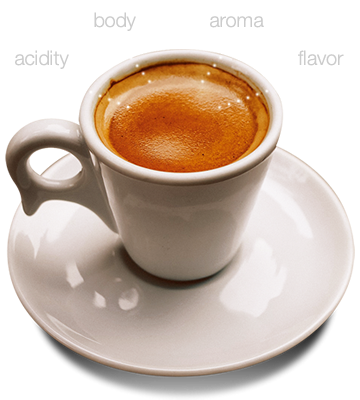Coffee Tasting Tips

They say that tastes differ and in fact people may have different perceptions of taste and aroma. In addition, they can vary from day to day with the same person depending on how he or she feels and what food he or she has just eaten before.
Still experts in the coffee industry have narrowed down certain criteria to be considered when they analyze various coffee samples. When they discuss and compare different types of coffee and coffee blends they use specific terms and take into account the following basic criteria.
1. Acidity - This is the primary distinguishing characteristic of coffee. It refers to a slight sharpness one can feel around the edges of the tongue when he tastes coffee. Some people describe this sensation as dryness but acidity doesn't mean sourness. In fact, good coffee is characterized by the right degree of acidity that adds the punch to it. Without acidity coffee taste will be rather dull and bland. When speaking about mellow coffee experts mean that it has low acidity.
2. Body - This stands for the texture of the coffee which can be rich and heavy or light and watery. The more oils and soluble compounds extracted during the brewing the stronger the body is. A stronger coffee has more body.
3. Aroma - This is the smell a person feels when the aromatic oils and volatile compounds released during the brewing process mix. Most often coffee aroma is described as burnt, bland, fragrant, musty, nutty, spicy or chocolaty.
4. Flavor - It focuses on how acidity, body and aroma interact to produce the overall effect of the drink as well as specifies the dominating sensations our tongues can feel like bitterness, sourness, saltiness or sweetness. Flavor is the most subjective criterion of all mentioned above. Professional coffee tasters will also distinguish the complexity of the flavor, the balance (if the coffee taste lacks the prevailing characteristic) and the body depth.
In addition to these terms, coffee tasting experts can characterize coffee flavor as bright, caramelly, buttery, fruity, harsh, lifeless, grassy, muddy, mild, rubbery, and wild.
Of course, it is a rather difficult and subjective task to clearly describe different coffees but if you take into account all these criteria and practice a little you will be much better at it.
